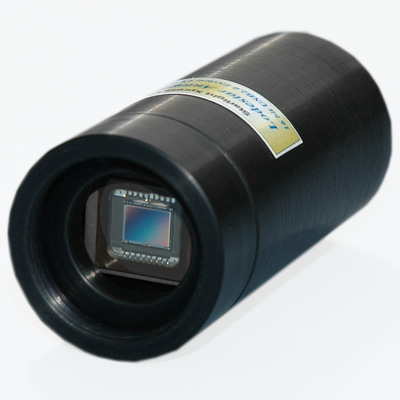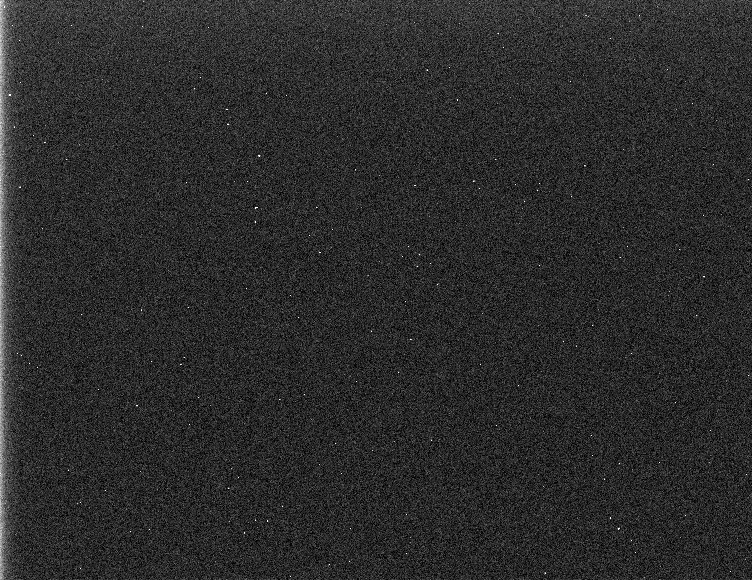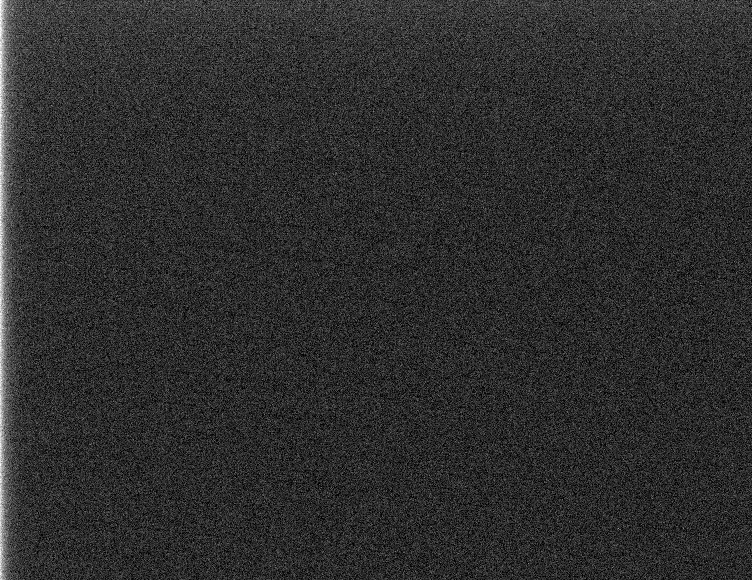|
the new and old autoguiders from Starlight Xpress Text and processing by Lorenzo Comolli - Test images by L.Comolli, A.Sala, E.Sordini Written in September 2014 |
 |
 |
| The two tested cameras: from left the "old"
Lodestar and the new Lodestar X2 (adapted from image courtesy of
Starlight Xpress) |
|
Introduction
The main reason for this test is to evaluate the performance of the new Lodestar X2 vs. the older Lodestar (called “Lodestar 1” in this article) I personally own since 2010, and which I'm very happy with. The idea for the test came from Emmanuele Sordini (owner of a Lodestar 1), while talking with Alessandro Sala (Lodestar X2) and myself (Lodestar 1). So we gathered together on 21 Sept 2014 in my observatory to perform the test. By the way, you may also be interested in an older comparative test I did between the Lodestar 1 and SXV-H5.
You may also be interested in an older test I made between the Lodestar 1 and SXV-H5.
Differences
The new Lodestar X2 has very few differences from the older Lodestar 1. Here are the main ones:
- Sensor: updated from Sony ICX429 to ICX829. According to the Starlight Xpress website, the new sensor has "considerably
improved QE and read noise. This new 'Exview 2' chip approximately
doubles the Lodestar sensitivity and adds nearly a full star magnitude
to the minimum guide star brightness". Also according to Sony (see the sensor datasheet) "the new products have approximately 6 dB greater sensitivity, a vast improvement over the existing ICX428AK/AL and ICX429AK/AL"
- Autoguider socket: the older Lodestar has a very small and unreliable connector (JST, 5-way, ZH style, 1.5 mm pitch) that can easily slip out, thus ruining the exposures. My personal solution was easy: joining the USB connector together with the JST cable with a plastic cable tie. Other solutions are available on the market, such as the Telescope Service "Strain relief for Lodestar cable" or the TecnoSky "Blocca cavi per Lodestar". The new Lodestar X2 finally uses the RJ12 standard autoguider connector which will hold the cable firmly in place.
 |
| Comparison of the autoguide connectors (adapted from image courtesy of Starlight Xpress). |
The Lodestar X2 shares many advantages of its predecessor: very easy to use, compact and lightweight (only 70 g and 31.8 mm in diameter). It is also supported by the most popular software packages, plus it doesn’t need an external power supply since the same USB2 cable is used both for communication and as a power source.
| Comparison
table |
||
| Model | Lodestar 1 |
Lodestar X2 |
| Chip |
Sony ICX429 Exview
interline |
Sony ICX829 Exview2 interline |
| # pix X | 752 | |
| # pix Y | 580 |
|
| Total pixels | 436160 |
|
| Dim pix X [um] | 8.6 | |
| Dim pix Y [um] | 8.3 | |
| Sensor dim X [mm] | 6.47 | |
| Sensor dim Y [mm] | 4.81 | |
| Area [mm^2] | 31.1 | |
| Cooling | no | |
| ADC bit | 16 | |
| Download time [s] | <0.2 | |
| Readout |
two
independent readouts for even and odd lines |
|
| Quantum efficiency |
See figure
below |
|
| Weight of head [g] | 70 | |
| Weight of power supply [g] | 0 | |
| Needed cables | 1 USB mini 1 ST4 (JST 5 way ZH) |
1 USB mini 1 ST4 (RJ12) |
| Current [I] | 0.5 | |
| Voltage [V] | 5 | |
| Power [W] | 2.5 | |
| Price (new 2014) [€] | (2011 price: 510€) | 543 |
| Price (used 2014) [€] | 390 | - |
| Links to manufacturer |
Lodestar
1 |
Lodestar X2 |
 |
| Comparison
of the two cameras relative quantum efficiency. Please note that this is *relative* quantum efficiency, so no information about the absolute sensitivity can be inferred. From this graph the only info is that the sensitivity to colors of the new sensor is nearly the same of the older one. |
A simple test setup was used, composed of a small refractor, with a typical diameter used for guiding, mounted on a bigger OTA. Here are the details:
- Guiding scope (used with the cameras at the prime focus): Pentax 75, apochromatic refractor, 75 mm diameter, f/6.7, 500 mm focal length.
- Main scope (not used): 310 mm Newtonian reflector.
- Mount: Astrosystems fork mount (very bulky mount that sits permanently in my observatory).
- Location: Tradate (VA), a light polluted city in the Po Valley, Italy.
- Temperature: about +19 °C
- Sky brightness: 19.2 mag/arcsec^2 (measured with the SQM-LE)
- Date: 21 September 2014
Test protocol
Two series of images of the galaxy NGC7331 were gathered with both cameras, over a timespan of about 30 minutes, when the object was very high in the sky (about 65°). The conditions were stable during the test with clear sky.
The dark images were median combined, while the light images were SD-mask combined.
Here are the registered images:
| Exposure |
Lodestar
1 |
Lodestar
X2 |
| 1 s |
5 exp |
5 exp |
| 10 s |
5 exp | 5 exp |
| 30 s |
5 exp | 5 exp |
| dark
1 s |
5 exp | 5 exp |
| dark
10 s |
5 exp | 5 exp |
| dark
30 s |
5 exp | 5 exp |
| bias |
9 exp |
9 exp |
The analysis of the recorded images was especially focused on the following aspects.
- SNR of guide star: the better the SNR (signal to noise ratio), the better the guiding accuracy. This is very frequently a highly underestimated factor in guiding, but this is the key to good subpixel accuracy. Cameras with high sensitivity and quality (usually associated with a higher number of bits), will produce better results. Both cameras have 16 bit digitization and a very similar SNR, so that there is virtually no difference in guiding accuracy. See "Reference star SNR" in the table below.
- Background noise: to measure this quantity, the standard deviation (std) of the background must be compared to the sensitivity, measured by means of the flux intensity of a reference star. The result is similar in the two cameras. Oddly enough, the relative std of the Lodestar X2 improves with longer exposures. See "Std relative to flux" in the table below.
- FWHM of guide star: the pixel size is the same, so no difference is expected. The measurements show nearly identical results, with stars from 6" to 8" in diameter. See "Fwhm ["]" in the table below.
- Hot pixels: the approximate number of hot pixel was measured in the 1 s dark frame. As guiding cameras are frequently used without dark calibration, 1 s of exposure yields good sensitivity with a reasonably low hot pixel count. Hot pixels are particularly nasty because they produce spurious signals that can ruin the guiding. Both cameras were found to produce very few hot pixels (Lodestar 1 ~30, Lodestar X2 ~10). The brightness of the hottest pixel was found to be 564 times the background standard deviation in the Lodestar 1 and 143 times in the Lodestar X2, so the new camera has fewer and dimmer hot pixels. Moreover my old Lodestar 1 shows a vertical hot column, while the Lodestar X2 is clean. See "Number of hot pix (approx)" in the dark data table below.
- Spurious glow: both cameras have a noticeable glow on the left-hand side of the frame, which is by far dimmer in the Lodestar X2.
 |
| Comparison of images of the galaxy NGC 7331. Pentax 75
refractor, 500 mm focal length. Each panel is an sd-mask combine of 5 exposures of 1-10-30 s each, dark calibrated. Click on the image for 100% |
| NGC7331 combine | 5 x 1 s | 5 x 10 s | 5 x 30 s | |||
| Camera | Lodestar 1 | Lodestar X2 | Lodestar 1 | Lodestar X2 | Lodestar 1 | Lodestar X2 |
| Reference star flux | 13256 | 10071 | 134520 | 103755 | 354683 | 292224 |
| Flux relative to Lode X2 |
132% | 100% | 130% | 100% | 121% | 100% |
| Reference star SNR | 179 | 134 | 1262 | 1125 | 2077 | 2520 |
| Std of background | 5.27 | 5.35 | 7.59 | 6.57 | 12.17 | 8.26 |
| Std relative to flux | 75% | 100% | 89% | 100% | 121% | 100% |
| Fwhm [pix] | 1.85 | 2.04 | 1.85 | 1.95 | 2.28 | 2.13 |
| Fwhm ["] | 6.44 | 7.10 | 6.43 | 6.78 | 7.94 | 7.41 |
And from these dark data.
| Dark median 5 x 1 s | Lodestar 1 | Lodestar X2 |
| Std of background | 8.4 | 8.7 |
| Ave | 2180 | 950 |
| Max | 6916 | 2198 |
| Max-Ave | 4736 | 1248 |
| Max-Ave normalized | 564 | 143 |
| Ave+20std | 2348.0 | 1124.0 |
| Ave+10std | 2264.0 | 1037.0 |
| Ave-5std | 2163.2 | 932.6 |
| number of hot pix (approx) | 30 | 10 |
Limiting magnitude measurements
I measured the limiting magnitude from the 5x30s combined exposure. The Lodestar 1 can detect stars a little fainter than those detected by the Lodestar X2. So, the manufacturer’s claim that the Lodestar X2 is more sensitive by "nearly a full star magnitude" could not be confirmed: in fact, the Lodestar X2 was found to be somewhat less sensitive (about 0.3 mag). This really small difference goes nearly unnoticed while guiding, but is surprising nonetheless.
 |
| Limiting magnitude measurements on the two
Lodestar cameras and on other guiders. For the measurement method see here or read the article on Nuovo Orione Feb 2010. |
| Limiting magnitude results on 5x30s combine (at snr=6) |
|
| Lodestar 1 | 16.4 |
| Lodestar X2 | 16.1 |
| I-nova Pla-mx | 16.1 |
| Philips Vesta Pro BN | 14.7 |
| Magzero Mz5m | 12.8 |
Conclusions
Both cameras were found to have similar (great) sensitivity and features. The two improvements claimed by the manufacturer were tested. Undoubtedly, the new autoguider socket is by far better, but the Lodestar X2 is not more sensitive than the older model.
So, given the above results, two questions come to mind:
1. Would I recommend the new camera to new customers?
Sure! All in all it's a great autoguider, just like its predecessor.
2. Is the Lodestar X2 worth the upgrade from Lodestar 1?
Not really, because the image quality and sensor sensitivity are pretty much the same. The only real improvement over the older model is the better cable socket.
| Test results | ||||
| Image quality | tie | |||
| Sensitivity | Little better Lodestar 1 | |||
| SNR of guide star | Little better Lodestar 1 | |||
| Number of pixels | tie | |||
| Hot pixels | Little better Lodestar X2 | |||
| Pixel dimension (smaller is better) | tie | |||
| Dimensions | tie | |||
| Cable complexity | tie | |||
| Autoguider cable reliability | Much better Lodestar X2 | |||
| Power consumption | tie | |||
I'd like to acknowledge Emmanuele Sordini for the (many!) English text revisions, and again Emmanuele Sordini and Alessandro Sala for gathering with me and taking the test images. Thanks also to Angelo Besani for pointing out the Sony sensor datasheet.







